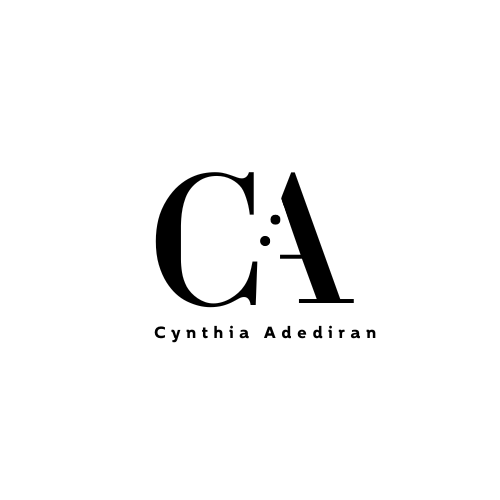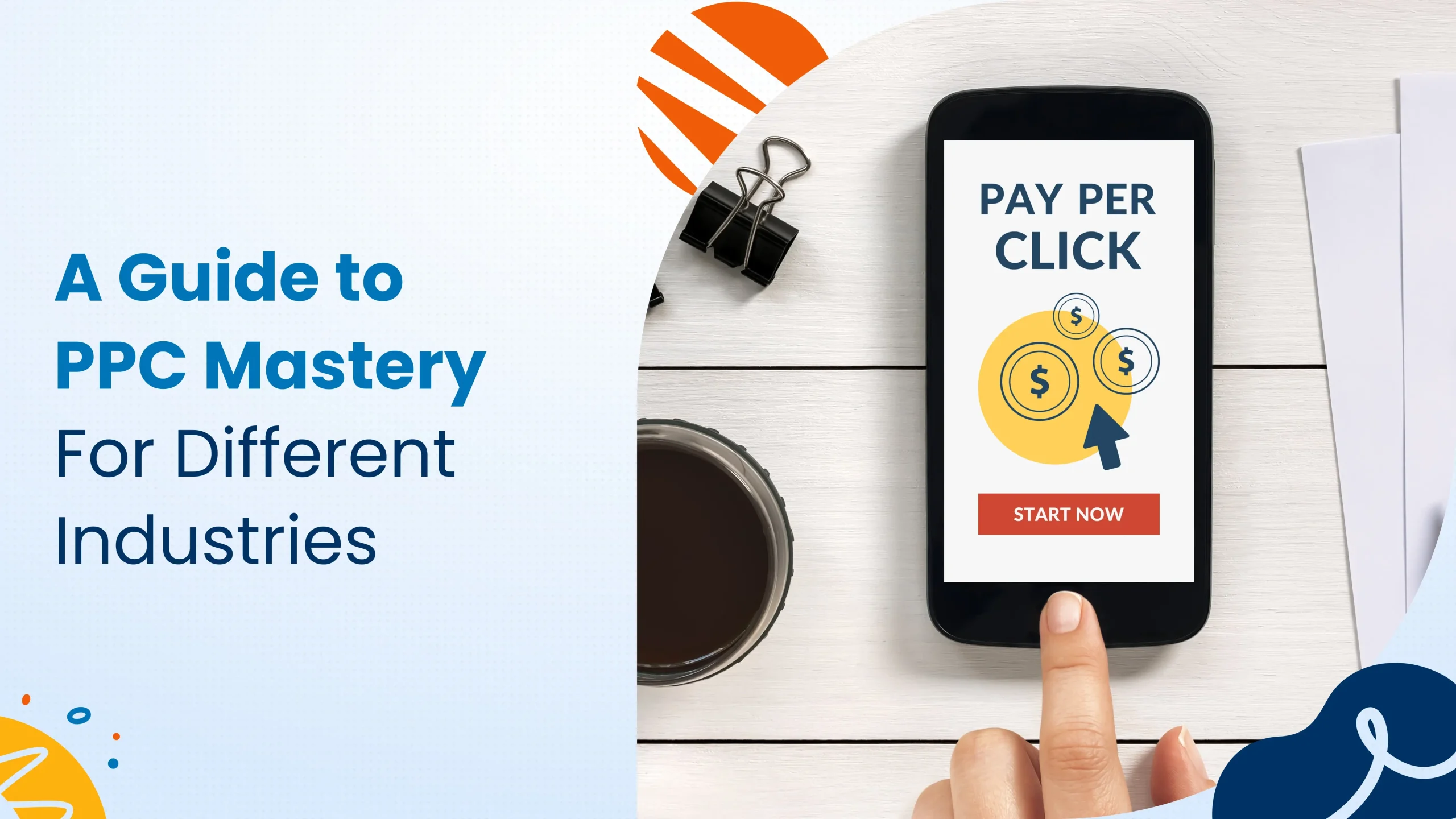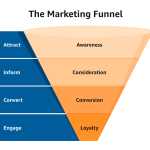Introduction: Why Conversion-Driven PPC Matters
Pay-per-click (PPC) advertising remains one of the most powerful tools in a marketer’s arsenal. Whether you’re targeting buyers through Google Search, YouTube, or social platforms like Meta and LinkedIn, PPC delivers instant visibility and measurable results.
But the difference between a high-performing campaign and a budget-draining one often comes down to conversion strategy. It’s not just about getting clicks, it’s about turning those clicks into customers.
In this article, we’ll break down key lessons from five different industries: e-commerce, B2B services, tech, health & wellness, and education, to show you how to craft high-converting PPC campaigns no matter what space you’re in.
Industry #1: E-Commerce
Goal: Drive product sales profitably
Challenges:
-
High competition and CPCs
-
Cart abandonment
-
Seasonality
Key PPC Strategies:
1. Use Google Shopping & Performance Max
Shopping ads showcase product images, pricing, and reviews ideal for users with high purchase intent. Performance Max helps you scale by reaching across Google Search, Display, YouTube, and Gmail from one campaign.
2. Segment by Product Category or Margin
Avoid grouping high-margin and low-margin products together. Break down campaigns to control budget and bids for each segment.
3. Leverage Retargeting
Use dynamic remarketing to show users the exact products they viewed, paired with urgency-driven copy like “Only a few left!” or “Sale ends today!”
4. Optimise for Mobile
Make sure landing pages are lightning-fast and mobile-optimised, with a frictionless checkout experience.
Pro Tip:
Use promo extensions and price extensions in Google Ads to showcase offers directly in the ad.
Industry #2: B2B Services
Goal: Generate qualified leads (form fills, consultations, demos)
Challenges:
-
Long sales cycles
-
Smaller audiences
-
Niche targeting needs
Key PPC Strategies:
1. Target Bottom-of-Funnel Keywords
Focus on intent-based search terms like:
-
“Best [software/service] for [industry]”
-
“Compare [tool A] vs [tool B]”
-
“Top-rated [service] providers UK”
These keywords attract users actively seeking solutions.
2. Use LinkedIn Ads for Account-Based Targeting
Target specific job titles, industries, or companies. This is especially effective for enterprise-level B2B.
3. Offer Lead Magnets
Drive traffic to high-value assets like whitepapers, industry reports, or ROI calculators to collect leads and nurture them through email marketing.
4. Track Micro-Conversions
Not everyone will book a demo immediately. Track key steps like video views, eBook downloads, or pricing page visits as indicators of interest.
Pro Tip:
Run retargeting campaigns that move leads through the funnel (e.g., whitepaper download → invite to a demo).
Industry #3: Technology & SaaS
Goal: Drive free trials, demos, or software signups
Challenges:
-
Educating the market
-
Complicated value propositions
-
Trial-to-paid conversion rates
Key PPC Strategies:
1. Simplify the Offer
Ads should focus on ONE clear benefit. Avoid jargon, be user-focused. For example:
“Simplify your project management. Try our tool free for 14 days.”
2. Split-Test CTAs
Test different calls to action:
-
“Start Free Trial”
-
“See It in Action”
-
“Request a Demo”
CTAs impact conversion more than most marketers realise.
3. Use Competitor Comparison Keywords
Many users are already comparing tools. Bid on branded + comparison terms like:
“Monday.com vs Trello” or “Top Airtable Alternatives”
4. Create Use Case-Specific Landing Pages
Segment audiences and send them to relevant pages based on job role or need (e.g., “CRM for Startups” vs. “CRM for Real Estate”).
Pro Tip:
Use video landing pages to explain your software visually and increase demo signups.
Industry #4: Health & Wellness
Goal: Bookings, memberships, or product sales
Challenges:
-
Ad policy restrictions (especially in Meta Ads)
-
Emotional vs. logical buyer motivations
-
Seasonal spikes
Key PPC Strategies:
1. Focus on Benefits, Not Just Features
People don’t want a workout, they want results. Speak to end outcomes:
“Lose weight in 30 days without the gym”
“Sleep better with our 5-minute meditation app”
2. Use Meta Ads to Build Trust
Use lifestyle-focused video and image ads with real people, not stock photography. Include testimonials and social proof.
3. Create Seasonal Offers
Capitalize on high-intent periods like New Year, summer, or post-holiday resets with time-limited discounts or bundles.
4. Use Localised Campaigns
If you’re a local clinic, gym, or studio, use radius targeting and local search ads to reach nearby users ready to act.
Pro Tip:
Comply with ad policies, especially when referencing health outcomes. Use disclaimers and avoid “before/after” language in ads.
Industry #5: Education & Online Learning
Goal: Enrolments, leads, or course signups
Challenges:
-
Long decision-making period
-
High competition from aggregators
-
Proving value and credibility
Key PPC Strategies:
1. Highlight Outcomes
Focus your ad copy and landing pages on tangible benefits:
“Become a certified digital marketer in 12 weeks”
“97% of our graduates find jobs within 6 months”
2. Use Remarketing to Stay Top-of-Mind
Most users won’t convert on their first visit. Retarget visitors with:
-
Student testimonials
-
Graduate success stories
-
Limited-enrolment reminders
3. Create Persona-Specific Funnels
Use copy that speaks directly to your audience:
-
Working professionals looking to upskill
-
Students looking for flexible learning
-
Parents searching for online tutoring for kids
4. Optimise for Mobile Enrolments
Make sure your landing page and lead forms work smoothly on mobile. Consider one-click signup options (e.g., Google/Facebook autofill).
Pro Tip:
Use YouTube Ads to reach students early in their search journey, showcasing your instructors, success stories, or program breakdowns.
Universal Elements of High-Converting PPC Campaigns
No matter the industry, all successful PPC campaigns share a few universal characteristics:
1. Highly Targeted Audience Segmentation
Avoid broad audiences. The more granular your targeting by demographics, location, device, or behaviour—the more relevant your ads will be.
2. Clear, Compelling CTAs
Don’t assume people know what to do. Whether it’s “Buy Now,” “Book a Demo,” or “Download Free Guide,” tell them exactly what’s next.
3. Dedicated Landing Pages
Never send traffic to your homepage. Use custom landing pages aligned to each ad group with:
-
Headline matching the ad
-
Benefits-focused copy
-
Strong visuals and CTAs
-
Social proof or trust badges
4. Conversion Tracking
Use tools like:
-
Google Ads conversion tracking
-
GA4 event tracking
-
Meta Pixel
-
LinkedIn Insight Tag
Track micro and macro conversions to understand full funnel performance.
5. A/B Testing and Continuous Optimisation
Test everything: headlines, images, keywords, audiences, landing pages. Let data—not assumptions—guide your decisions.
Real Campaign Tweaks That Boosted Conversions
Here are some real-world tweaks that significantly improved conversion rates across campaigns:
| Tweak | Result |
|---|---|
| Swapped stock images for real customer photos | +34% CTR |
| Replaced “Get Started” CTA with “Start Free Trial” | +27% conversion rate |
| Shortened landing page form from 6 fields to 3 | -45% bounce rate |
| Added video testimonial to product page | +21% lead generation |
| Introduced countdown timer for limited offer | +29% sales in 3 days |
Key Takeaways
Crafting high-converting PPC campaigns requires more than just budget and keywords. It’s about understanding user intent, tailoring the journey, and constantly testing to improve.
From the 5 industries we’ve explored, here’s what you should remember:
-
E-commerce: Use visuals, segmentation, and urgency
-
B2B: Focus on intent, lead magnets, and nurturing
-
Tech/SaaS: Educate, simplify, and test CTAs



